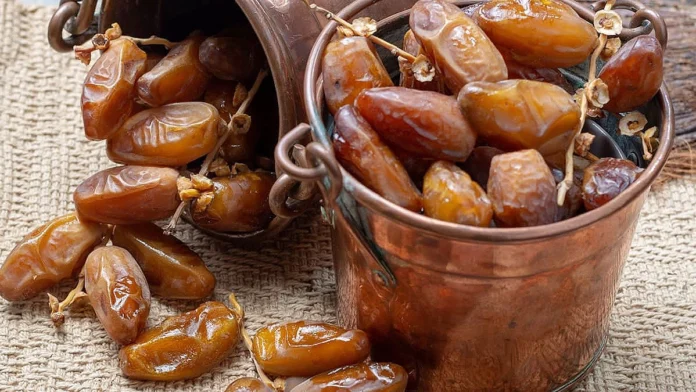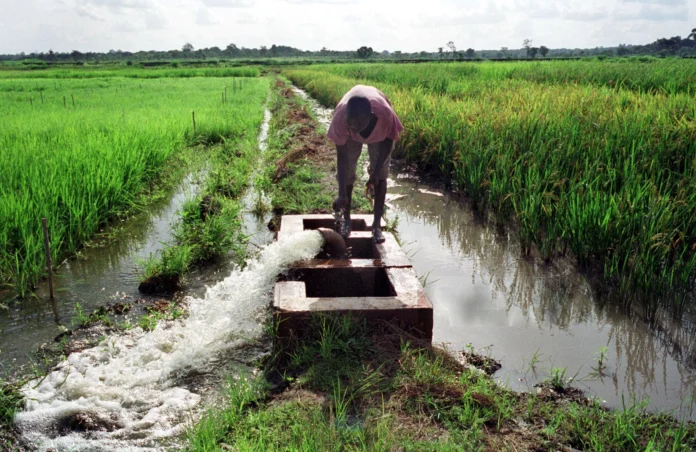Arabfields, Sana Dib, Financial Correspondent Johannesburg, South Africa — In the lush, volatile highlands of eastern Democratic Republic of Congo (DRC), a quiet agricultural revolution is taking root, literally. Sweetpotato, long a staple crop in the provinces of North Kivu and South Kivu, is experiencing renewed momentum as orange-fleshed varieties (OFSP) capture the attention of farmers, urban consumers, and nutrition experts alike. What was once primarily a subsistence crop is evolving into a dual-purpose powerhouse: bolstering household food security while addressing one of the region’s most persistent public health challenges, vitamin A deficiency.
The rise of OFSP in the DRC is not happening in isolation. It reflects broader trends across sub-Saharan Africa, where biofortified crops are increasingly seen as cost-effective tools for improving nutrition without requiring major changes in dietary habits. In a country where conflict, displacement, and climate variability routinely disrupt food systems, sweetpotato’s inherent advantages, drought tolerance, low input needs, and a short growing cycle, make it an ideal candidate for scaling up.
For generations, sweetpotato has been more than just food in eastern DRC; it is a cultural anchor. In the Mashi language spoken in parts of South Kivu, it is affectionately called cilera bana, meaning “protector of children” or “lullaby of children.” This name underscores its role as a reliable source of calories during lean seasons and a gentle, digestible food for infants and young children.
As Elois Cinyabuguma, Director of Research at INERA-Mulungu research station, explains: “Sweetpotato remains the main crop for food security in Congolese households. They are used in nutrition to help reduce malnutrition. They have a significant impact on farmers’ incomes because they are grown and harvested throughout the seasons in the Eastern DRC. Precisely, the crop is a source of life congruent to its local name ‘cilera bana’, which means protector or lullaby of children in the Mashi language.”
Traditional white- or yellow-fleshed varieties still dominate many fields, planted using conserved vines at the start of the rainy season. Yet farmers are increasingly incorporating orange-fleshed types, which offer dramatically higher levels of beta-carotene, a precursor to vitamin A. A single mediumsized orange-fleshed sweetpotato root can provide a child’s full daily vitamin A requirement, making it a powerful weapon against hidden hunger.
The shift toward OFSP has been accelerated by targeted interventions from research and development organizations. The International Potato Center (CIP), working alongside national partners like INERA (Institut National pour l’Étude et la Recherche Agronomiques), has established vine multiplication sites, demonstration plots, and farmer field schools across North and South Kivu.
These programs do more than distribute planting material. They train farmers on best practices, such as proper spacing, rapid multiplication techniques, and integrated pest management, that can significantly boost yields. Early-maturing OFSP varieties can be harvested in as little as three to four months, allowing farmers to bridge hunger gaps and generate income through multiple cycles per year.
In conflict-affected areas, where access to fertilizer and improved seed is limited, sweetpotato’s ability to thrive on marginal soils with minimal inputs is particularly valuable. Vines are easy to transport and share among communities, creating informal seed systems that are resilient even when formal supply chains break down.
While rural households have long appreciated sweetpotato leaves as a nutritious vegetable and roots as a staple, urban consumers in cities like Bukavu and Goma are driving new demand. Orange-fleshed roots stand out visually in markets with their vibrant color, and awareness campaigns highlighting their health benefits are paying off.
Small-scale processors are experimenting with OFSP in innovative ways: incorporating it into bread, doughnuts (mandazi), cakes, cookies, and even juice. Puree made from boiled and mashed OFSP is being tested as an ingredient in baby food formulations and bakery products. These value-added items command premium prices and extend shelf life, opening doors to larger markets beyond the Kivus.
Local bakeries and women’s processing groups are at the forefront of this transformation. By replacing part of wheat flour with OFSP flour, they reduce import dependency while creating fortified products that appeal to health-conscious buyers and institutional purchasers such as schools and hospitals.
The Democratic Republic of Congo consistently ranks among the countries with the highest rates of child stunting and micronutrient deficiencies. Vitamin A deficiency impairs immune function, vision, and growth, contributing to higher child mortality. Introducing OFSP addresses this directly and sustainably, farmers grow the solution themselves rather than relying on imported supplements or fortified foods.
Nutrition programs supported by NGOs and government initiatives increasingly include OFSP in food baskets for displaced families and in school feeding schemes. The crop’s versatility (roots for energy, leaves for vitamins and minerals) makes it a cornerstone of integrated nutrition-sensitive agriculture.
Despite the optimism, hurdles remain. Insecurity in parts of eastern DRC disrupts extension services and market access. Limited cold storage and processing infrastructure mean that surplus harvests can spoil before reaching consumers. Climate change is bringing more erratic rainfall, testing even sweetpotato’s famed resilience.
Strengthening decentralized vine multiplication, investing in small-scale processing equipment, and linking farmer cooperatives directly to urban buyers will be critical next steps. Public-private partnerships could help scale commercial OFSP products while ensuring farmers capture more value.
The success story unfolding in the Kivus offers lessons far beyond Congo’s borders. In an era of overlapping crises, conflict, climate shocks, and malnutrition, crops like orange-fleshed sweetpotato demonstrate how agriculture can deliver multiple wins: higher incomes, greater resilience, and better health.
As urban demand grows and processing innovations take hold, the humble sweetpotato is poised to play an even bigger role in feeding and nourishing one of Africa’s most challenging regions. For the families who call it cilera bana, the protector of children has never been more vital.












